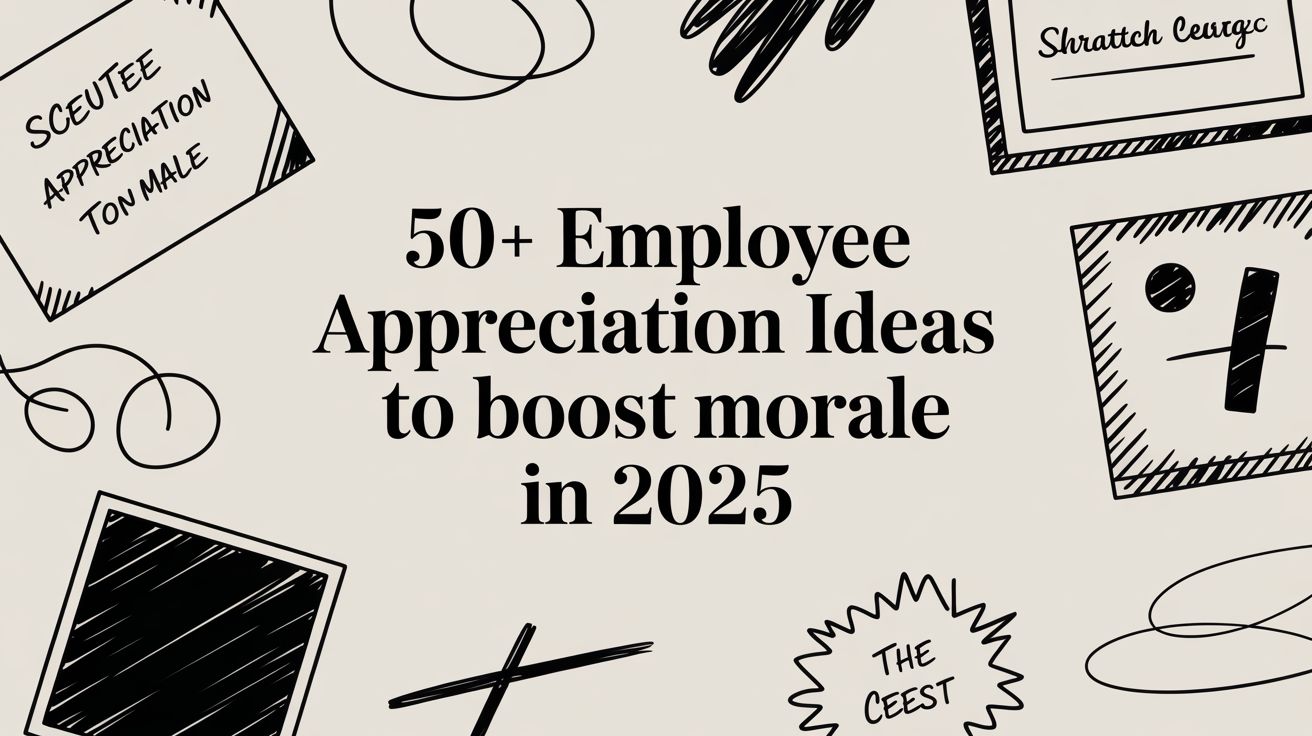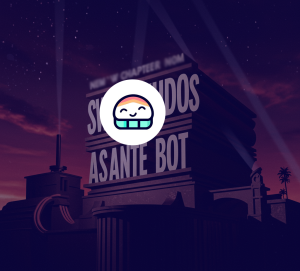In today’s competitive landscape, showing genuine appreciation is the cornerstone of a thriving workplace culture. It’s not about extravagant gestures but about consistently making your team feel valued, seen, and heard. The importance of team recognition cannot be overstated; it boosts morale, fuels productivity, and is one of the most powerful drivers of employee retention. A simple “thank you” can increase an employee’s sense of belonging, while a well-timed reward can prevent burnout and reinforce critical company values.
Table of Contents
This comprehensive guide moves beyond generic advice to provide a curated list of actionable employee appreciation ideas designed for the modern workforce, whether your team is in-office, remote, or hybrid. We will explore the “why” behind recognition and dive straight into the “how,” offering practical examples and frameworks you can implement immediately. These strategies are built for the fast-paced environment of platforms like Slack, helping you integrate gratitude directly into your daily workflow.
Inside, you’ll find a wealth of specific, actionable insights to transform your approach, including:
- Categorized Ideas: From quick Slack shout-outs and small rewards to team rituals and major milestone celebrations.
- Ready-to-Use Templates: Copy-and-paste Slack messages to make giving praise effortless and impactful.
- Implementation Guides: Practical steps for using tools like AsanteBot to automate birthday wishes, manage emoji-based currency, and run recognition leaderboards.
From quick wins to meaningful career development opportunities, you’ll find strategies to fit every budget and team dynamic. Our goal is to help you transform appreciation from a sporadic event into an embedded, daily habit that strengthens your entire organization.
1. Flexible Work Arrangements
One of the most impactful employee appreciation ideas is to offer genuine flexibility in how, when, and where work gets done. This approach moves beyond traditional rewards and shows deep trust and respect for employees’ autonomy and work-life integration. The importance of this form of team recognition lies in its message: you trust your team to manage their time and deliver results, regardless of location. This empowers employees, reduces burnout, and acknowledges them as responsible adults who can manage their own work-life integration.

This gesture directly addresses the modern workforce’s demand for better balance, making it a highly valued, non-monetary benefit. A practical example is allowing an employee to shift their hours to 7 AM-3 PM to accommodate school pick-ups, or implementing “core hours” from 10 AM-2 PM and letting team members structure the rest of their day. Companies like Buffer, a fully remote-first organization, and Salesforce, with its “Success from Anywhere” hybrid model, demonstrate that empowering employees with flexibility leads to higher engagement and better retention.
How to Implement Flexible Work
Successfully introducing flexibility requires structure and clear communication, not a complete lack of rules. The goal is to create a system where both the employee and the business thrive.
- Establish Clear Guidelines: Create a formal policy outlining expectations for availability, communication protocols, and core collaboration hours. This ensures everyone is on the same page.
- Invest in Technology: Equip your team with the right tools. This includes project management software like Asana or Trello to track progress and communication platforms like Slack to maintain connection.
- Focus on Output, Not Hours: Shift performance metrics from hours clocked to goals achieved. Judge employees on the quality and timeliness of their work, not on their online status.
Pro-Tip: True flexibility isn’t just about location; it’s about time. Consider options like a 4-day work week, compressed hours, or allowing employees to set their own schedules around core meeting times. This level of trust is a powerful form of team recognition.
2. Professional Development and Training
Investing in your team’s growth is one of the most powerful employee appreciation ideas because it shows you value their long-term potential, not just their immediate output. Sponsoring courses, certifications, workshops, or mentorship programs demonstrates a genuine commitment to their career advancement. The importance of this form of team recognition is that it communicates a long-term investment in an individual’s career journey, fostering profound loyalty and engagement far beyond a single project.

This approach directly fuels both personal and organizational success, creating a workforce that is more skilled, confident, and motivated. A practical example would be allocating a $1,500 annual stipend for each employee to spend on approved courses, or setting up an internal mentorship program that pairs junior staff with senior leaders. Amazon’s Career Choice program offers tuition assistance for in-demand fields, even if those skills aren’t directly related to an employee’s current role, empowering employees to take ownership of their growth.
How to Implement Professional Development
A successful training program is strategic and supportive, not just a box-ticking exercise. The aim is to align employee aspirations with company goals for mutual benefit.
- Align Training with Career Paths: Work with employees to identify development opportunities that support their career goals and also contribute to business objectives. This ensures the investment is meaningful for both parties.
- Provide Dedicated Learning Time: Whenever possible, allow employees to dedicate a few hours during their workweek to their studies. This shows that you truly prioritize their growth and aren’t just adding to their workload.
- Encourage Knowledge Sharing: Create a system for employees to share what they’ve learned. This could be a lunch-and-learn session or a dedicated Slack channel, which reinforces learning and benefits the entire team.
Pro-Tip: Connect learning directly to advancement. When an employee completes a certification, publicly celebrate it and discuss how their new skills can be applied to future projects or a potential promotion. This makes the value of professional development tangible.
3. Monetary Bonuses and Salary Increases
While non-monetary recognition is vital, direct financial rewards remain one of the most powerful employee appreciation ideas. Monetary bonuses and merit-based salary increases are tangible, unambiguous signals that the company values exceptional performance. The importance of this form of team recognition is its directness; it clearly links an employee’s hard work to financial gain, reinforcing desired behaviors and motivating continued excellence. It is the most straightforward form of appreciation, showing you see and reward their impact on the bottom line.
This method goes beyond a simple “thank you” by providing a reward that has a meaningful impact on an employee’s life. A practical example is offering a “spot bonus” of $250 for an employee who goes above and beyond to solve a customer issue, or implementing a clear bonus structure where hitting 110% of a quarterly target results in an extra 10% bonus payout. Companies like Goldman Sachs with its performance-based bonuses or Costco with its above-market wages build a reputation for valuing their workforce.
How to Implement Monetary Rewards
To be effective, financial rewards must be handled with transparency, fairness, and clear communication. The goal is to motivate, not create resentment or confusion.
- Establish Clear, Transparent Criteria: Define and communicate the specific metrics and goals tied to bonuses or raises. Whether based on individual performance, team targets, or company profits, everyone should know what they need to do to earn it.
- Ensure Consistency and Fairness: Apply the criteria uniformly across all departments and roles to avoid perceptions of favoritism. Regular audits of your compensation structure can help maintain equity.
- Offer Spot Bonuses: Don’t wait for annual reviews. Empower managers to issue immediate spot bonuses for outstanding achievements, like closing a major deal or solving a critical problem. This provides instant, impactful team recognition.
Pro-Tip: Clearly communicate how bonuses are calculated. When an employee receives a financial reward, they should understand exactly why they earned it. This transparency reinforces the connection between their actions and the company’s success, making the appreciation more meaningful.
4. Recognition and Public Acknowledgment
Celebrating employee achievements through public praise is one of the most powerful and cost-effective employee appreciation ideas. The importance of this form of team recognition is that it satisfies the fundamental human need for acknowledgment and belonging, significantly improving morale at a minimal cost. When you recognize someone’s hard work in front of their peers, you reinforce positive behaviors and create a culture where excellence is valued and celebrated, motivating not only the individual but the entire team.

This method amplifies the impact of individual praise, turning a single act of recognition into a team-wide motivational moment. A practical example is starting every weekly team meeting with a “wins of the week” segment where anyone can give a shout-out, or creating a dedicated Slack channel like #kudos for peer-to-peer praise. Zappos built its legendary culture on such programs, while Google’s Peer Bonus program allows employees to reward each other, proving that acknowledgment is a cornerstone of an engaged workplace.
How to Implement Public Recognition
Effective public recognition requires a thoughtful, consistent approach. The goal is to make acknowledgments feel genuine and integrated into your company’s daily rhythm, not like a rare, formal event.
- Create Dedicated Channels: Use a specific Slack channel, like
#winsor#shoutouts, for public praise. This makes recognition visible and encourages others to participate. - Be Specific and Timely: Don’t just say “good job.” Detail what the employee did and the positive impact it had. Delivering this praise soon after the achievement makes it more powerful. Crafting impactful messages can be made easier with examples of positive feedback.
- Incorporate Peer-to-Peer Systems: Empower employees to recognize each other. Tools like AsanteBot allow for easy peer-to-peer shoutouts using emoji currency, creating a dynamic and inclusive recognition culture.
Pro-Tip: Vary your recognition methods to keep the program fresh and engaging. Combine Slack shoutouts with monthly “Employee Spotlight” features in newsletters, team meeting call-outs, or even formal awards. This multi-channel approach ensures everyone feels seen and valued for their unique contributions.
5. Health and Wellness Programs
Investing in comprehensive health and wellness programs is a powerful way to show employees you care about them as whole individuals, not just for their professional output. The importance of this form of team recognition is that it demonstrates a deep commitment to an employee’s long-term health and happiness, building a culture of care that extends beyond the workplace. Offering these resources directly translates to higher engagement, reduced stress, and increased loyalty.
This gesture builds a supportive environment that benefits both the employee and the company. Practical examples include offering a monthly wellness stipend that can be used for a gym membership or yoga classes, providing a subscription to a meditation app like Calm, or hosting quarterly mental health workshops. Google’s on-site fitness centers and healthy meal options showcase how integrating wellness into the daily work environment can profoundly impact employee morale and overall well-being.
How to Implement Health and Wellness Programs
A successful wellness program is inclusive, accessible, and tailored to the actual needs of your team. The goal is to create a supportive environment where employees feel empowered to prioritize their health.
- Survey Your Team: Before launching, conduct anonymous surveys to understand what wellness benefits your employees would value most. This ensures your investment meets genuine needs.
- Provide Comprehensive Resources: Offer a balanced mix of support, including physical (gym discounts, yoga classes), mental (counseling services, meditation apps), and financial wellness (workshops, planning tools). A cornerstone of comprehensive wellness initiatives often includes exploring the Employee Assistance Program benefits.
- Promote and Communicate: Regularly communicate the available programs and resources through multiple channels, like Slack announcements and team meetings, to ensure high awareness and participation.
Pro-Tip: Make mental health support easily and confidentially accessible. Offering subscriptions to apps like Headspace or Talkspace and clearly outlining how to access counseling services removes stigma and encourages employees to seek help when they need it.
6. Extra Time Off and Paid Vacation
One of the most valuable employee appreciation ideas you can offer is the gift of time. Providing extra paid vacation days or flexible PTO policies is a powerful way to show respect for an employee’s personal life and well-being. The importance of this form of team recognition is that it directly combats burnout. It sends a clear message that you trust your team to manage their responsibilities and understand that rest is essential for sustained productivity and creativity.
This gesture promotes a healthier work-life balance, making it a highly sought-after benefit. A practical example is granting an extra day off following the successful completion of a major project, or implementing “Summer Fridays” where the office closes early. Companies like Netflix pioneered this with their unlimited vacation policy, built on a culture of freedom and responsibility. These policies show that when you treat employees like adults, they rise to the occasion, fostering deep loyalty.
How to Implement Extra Time Off
To make this benefit successful, you need a clear framework that ensures business continuity while empowering employees to fully disconnect and recharge.
- Establish a Clear Policy: Whether it’s “unlimited PTO,” “flexible vacation,” or bonus days, document the rules. Define the request process, notice periods for longer leaves, and any blackout periods to ensure clarity.
- Lead by Example: Managers and leadership must take their own vacation time and openly discuss it. If leaders never disconnect, employees will feel pressured to do the same, rendering the policy ineffective.
- Plan for Coverage: Create a system for handoffs and coverage. Ensure team members document key processes and cross-train on essential tasks so colleagues can truly unplug without worrying about work piling up.
Pro-Tip: Consider surprising your team with a company-wide day off after a major project milestone or a “recharge day” on a random Friday. These unexpected gestures of appreciation for hard work have a massive impact on morale and prevent burnout.
7. Career Advancement Opportunities
One of the most powerful and long-lasting employee appreciation ideas is to invest in your team’s professional growth. Creating clear pathways for promotions and new responsibilities is crucial. The importance of this form of team recognition is that it demonstrates a deep commitment to an employee’s long-term success, making them feel truly valued and secure. It shows you see a future for them within the company, which is a key driver of retention.
This strategy directly impacts motivation and retention. A practical example is creating a transparent career ladder document that clearly outlines the skills and accomplishments needed to move from a Junior to a Senior role, or offering “stretch assignments” that allow employees to test their skills on higher-level projects. Companies famous for their internal promotion cultures, like Procter & Gamble and Deloitte, build loyalty by showing a tangible commitment to employee futures.
How to Implement Career Advancement
Building a culture of internal growth requires transparency, structure, and consistent support. The goal is to make career progression a visible and attainable reality for every team member.
- Establish Transparent Promotion Criteria: Clearly define the skills, competencies, and achievements required for advancement to the next level. Remove ambiguity so employees know exactly what to work toward.
- Communicate Career Paths: Create and share visual career maps or ladders that show potential trajectories, including both management and technical tracks. This helps employees envision their future with the company.
- Provide Regular Development Plans: Use one-on-one meetings to discuss career goals and create actionable development plans. Offer stretch assignments and projects that help employees build the necessary skills for their next role.
Pro-Tip: Publicly celebrate every internal promotion. Announce it in a company-wide Slack channel and highlight the individual’s journey and contributions. This not only recognizes the promoted employee but also reinforces to everyone else that growth is a core company value.
8. Team Building and Social Events
Investing in shared experiences is one of the most powerful employee appreciation ideas because it fosters genuine human connection beyond projects and deadlines. The importance of this form of team recognition lies in its ability to build camaraderie and psychological safety. When colleagues feel connected on a personal level, collaboration improves, communication becomes more open, and the workplace becomes a more enjoyable and supportive community.
This gesture proves that the company values the holistic well-being and relationships of its team, not just their output. Practical examples range from a simple, catered team lunch every month to more organized activities like an escape room challenge, a company-sponsored volunteer day, or a virtual game tournament for remote teams. Companies like Google, with its famous team outings, demonstrate that creating opportunities for colleagues to connect directly translates to a stronger, more engaged workforce.
How to Implement Team Building and Social Events
A successful event feels inclusive and rejuvenating, not like a mandatory chore. The key is planning with your team’s actual preferences in mind to ensure the experience is genuinely appreciated.
- Survey Your Team: Don’t guess what people will enjoy. Send out a simple poll or survey to gather ideas and gauge interest in different activities, from escape rooms and cooking classes to volunteer days or a simple team lunch.
- Ensure Inclusivity: Plan events that cater to diverse interests, physical abilities, and personal preferences. Always make participation optional and consider virtual options for remote or hybrid team members. For more ideas, explore these virtual team-building activities.
- Mix Fun with Purpose: While the main goal is connection, events can also align with company values. A volunteer day, a skill-building workshop, or a collaborative charity challenge can be both fun and impactful.
Pro-Tip: The follow-up is just as important as the event itself. Share photos or a highlight reel in a company-wide Slack channel afterward. This extends the positive feelings, includes those who couldn’t make it, and reinforces the memory of a great shared experience.
9. Personalized Gifts and Surprises
Moving beyond generic company swag, personalized gifts and surprises demonstrate that you see and value employees as unique individuals. The importance of this form of team recognition is in its thoughtfulness; it creates a powerful emotional connection by showing you’ve paid attention to their specific interests, hobbies, and milestones. A gift tailored to someone’s personality feels far more significant than a one-size-fits-all item, creating a lasting positive memory.
This gesture is one of the most effective employee appreciation ideas for celebrating both professional achievements and personal life events. A practical example is giving a passionate coffee-loving employee a gift card to a local artisan roaster for their work anniversary, or sending a gift basket with their favorite snacks after they close a big deal. The key is the element of genuine thoughtfulness, which makes the employee feel truly seen and appreciated by their leadership.
How to Implement Personalized Gifts
Successful personalization requires a bit of research and organization, but the impact is well worth the effort. The goal is to make the employee feel uniquely recognized.
- Gather Preference Information: During onboarding or through casual surveys, discreetly collect information about hobbies, favorite snacks, coffee or tea preferences, and any allergies. Store this in a secure place for future reference.
- Celebrate a Mix of Milestones: Use personalized gifts for work anniversaries, project successes, and personal milestones like birthdays, new homes, or welcoming a new family member.
- Add a Personal Touch: Always include a handwritten note explaining why you are giving the gift. A sincere message from a manager or team lead amplifies the gift’s emotional impact significantly.
Pro-Tip: Partner with local businesses to create curated gift baskets. This not only provides a unique, high-quality gift for your employee but also supports your local community, adding another layer of meaning to your team recognition efforts.
10. Transparent Communication and Employee Input
Genuine appreciation isn’t just about rewards; it’s about respect. Fostering a culture of transparent communication and actively seeking employee input is a profound form of team recognition. The importance here is that it shows you value your team’s minds, not just their labor. When you involve employees in decisions and give them a voice, you build a foundation of trust and psychological safety, making them feel like valued partners in the business.
When employees feel heard and informed, their sense of ownership and engagement skyrockets. A practical example is holding a monthly “Ask Me Anything” session with leadership, or creating a formal process where teams can submit and vote on ideas for process improvements. Pixar’s “Braintrust” meetings create a space for candid feedback on projects from anyone, regardless of role. This demonstrates that valuing every voice leads to better outcomes and a more connected team.
How to Implement Transparent Communication
Building this culture requires consistent effort and a genuine commitment to two-way dialogue. It’s about creating systems where feedback is not just collected, but acted upon.
- Establish Clear Feedback Channels: Use regular pulse surveys, anonymous suggestion boxes, or dedicated Slack channels for feedback. Make it easy and safe for employees to share their thoughts.
- Share Both Wins and Losses: Be transparent about company performance, including successes and setbacks. This builds credibility and helps employees understand the “why” behind strategic decisions.
- Close the Feedback Loop: The most critical step is to acknowledge feedback and communicate what actions were taken. Even if an idea isn’t implemented, explain the reasoning to show that the input was heard and considered.
Pro-Tip: Don’t just ask for feedback on big-picture strategy. Involve teams in decisions that directly affect their work, such as choosing new software or refining a workflow. Celebrating these contributions reinforces that their expertise is essential.
Top 10 Employee Appreciation Ideas Comparison
| Strategy | 🔄 Implementation complexity | ⚡ Resource requirements | 📊 Expected outcomes | 💡 Ideal use cases | ⭐ Key advantages |
|---|---|---|---|---|---|
| Flexible Work Arrangements | Moderate — policy, manager training, tooling | Low–Moderate — remote tech; lower office costs | Improved retention, work–life balance, lower commute stress | Distributed teams, knowledge work, hybrid models | Boosts satisfaction and talent attraction |
| Professional Development and Training | High — curriculum, vendors, mentoring systems | High — tuition, platforms, time away from work | Skill growth, higher productivity, stronger promotion pipeline | Growth-focused orgs; roles requiring upskilling | Builds long-term capability and loyalty |
| Monetary Bonuses and Salary Increases | Low — defined criteria and payroll adjustments | High — recurring financial cost; quick payout | Immediate motivation, competitive hiring advantage | Sales/targets-driven roles; retention during short-term risk | Clear, tangible reward with measurable impact |
| Recognition and Public Acknowledgment | Low — program setup and communication | Low — minimal direct cost; coordination time | Improved morale, culture, peer motivation | All teams; frequent wins and culture-building | Cost-effective, memorable, scalable recognition |
| Health and Wellness Programs | Moderate — program design, vendor partnerships | Moderate–High — benefits, facilities, EAP costs | Reduced burnout, lower absenteeism, better productivity | High-stress roles; organizations prioritizing wellbeing | Improves health outcomes and reduces long-term costs |
| Extra Time Off and Paid Vacation | Low–Moderate — policy changes and coverage planning | Low direct cost; potential operational impact | Reduced burnout, higher satisfaction; possible scheduling gaps | Mature teams with autonomy; retention for overworked staff | Signals trust and supports recovery with minimal cash outlay |
| Career Advancement Opportunities | High — career frameworks, succession planning | Moderate — training, mentorship, HR processes | Increased engagement, retention, internal mobility | Organizations aiming to retain/top-develop talent | Strong retention and internal leadership pipeline |
| Team Building and Social Events | Low — event planning and logistics | Low–Moderate — budget varies by scale | Better communication, camaraderie, culture | Onsite or hybrid teams; culture enhancement initiatives | Builds connections affordably; breaks down silos |
| Personalized Gifts and Surprises | Low — procurement and personalization logistics | Low — modest per-person cost | Emotional connection, memorable recognition | Milestones, anniversaries, individualized appreciation | Personal, meaningful, and easily customized |
| Transparent Communication & Employee Input | Moderate — channels, cadence, leadership buy-in | Low–Moderate — time, tools, regular meetings | Greater trust, better decisions, increased engagement | Change management, strategy alignment, trust-building | Builds psychological safety and ownership |
Turn Appreciation from an Idea into a Habit
The journey from a list of potential employee appreciation ideas to a thriving, appreciative workplace culture is paved with consistency and intention. We’ve explored a wide spectrum of strategies, from quick Slack shout-outs and low-cost gestures to significant milestone celebrations and structured wellness programs. The core takeaway isn’t to implement all seventy ideas at once, but to understand the fundamental principle they all share: recognition must be genuine, frequent, and personalized to be effective.
A one-off bonus, while appreciated, is a temporary high. A culture where peer-to-peer praise is a daily reflex, where managers consistently acknowledge effort, and where milestones are celebrated with genuine enthusiasm, creates lasting psychological safety and engagement. The true value lies in weaving appreciation into the very fabric of your company’s daily operations.
From Sporadic Gestures to a Sustainable System
The difference between a company with “good perks” and a company with a “great culture” often comes down to systemization. Relying on individual managers to remember to give praise is a recipe for inconsistency. Building a system ensures that appreciation is delivered equitably and reliably across all teams.
This is where the power of a structured approach comes into play. By creating dedicated channels, establishing rituals like a weekly “Feedback Friday,” and using tools to automate reminders for birthdays and work anniversaries, you remove the friction and cognitive load associated with showing appreciation. It transforms recognition from a “nice-to-have” task that gets pushed aside on busy days into a non-negotiable, automated part of your workflow. The goal is to make saying “thank you” as natural and effortless as sending any other work-related message.
Key Takeaways for Building Your Appreciation Strategy
As you move forward, keep these central pillars in mind to ensure your efforts have the greatest impact:
- Diversity in Recognition: A successful strategy is a mixed portfolio. Combine public praise with private acknowledgment, monetary rewards with experiential ones, and team-wide celebrations with individual gestures. This ensures you’re catering to different personalities and contribution types. Not every achievement warrants a bonus, but every effort deserves recognition.
- Empower Peer-to-Peer Recognition: Do not underestimate the power of a compliment from a coworker. Manager-led recognition is essential, but a culture where colleagues actively and publicly celebrate each other’s wins fosters deeper bonds, enhances collaboration, and builds a powerful sense of shared success. This is often the most authentic and impactful form of praise.
- Link Recognition to Values and Goals: The most meaningful appreciation connects an employee’s actions back to company values or specific project goals. Instead of a generic “good job,” try “Thank you for your incredible attention to detail on the Q3 report; it perfectly reflects our company value of ‘Excellence in Everything We Do.'” This reinforces desired behaviors and shows employees how their individual work contributes to the bigger picture.
- Measure and Adapt: Don’t just implement and forget. Use tools to track recognition frequency, monitor leaderboards, and solicit feedback on which employee appreciation ideas resonate most. Are people using the emoji currency? Are they engaging with the weekly prompts? This data is invaluable for refining your strategy and ensuring it remains effective as your team evolves.
Ultimately, the most powerful employee appreciation ideas are those that become ingrained habits. By selecting a combination of strategies that align with your culture and utilizing tools to ensure consistency, you can create an environment where every employee feels seen, valued, and motivated to deliver their best work. This is not just about employee happiness; it’s a strategic investment in productivity, innovation, and long-term retention.
Ready to build a systematic and engaging recognition program directly within Slack? AsanteBot helps you automate shout-outs, manage rewards, celebrate milestones, and gather feedback seamlessly. Transform your employee appreciation ideas from a list into a daily habit by exploring what AsanteBot can do for your team.




